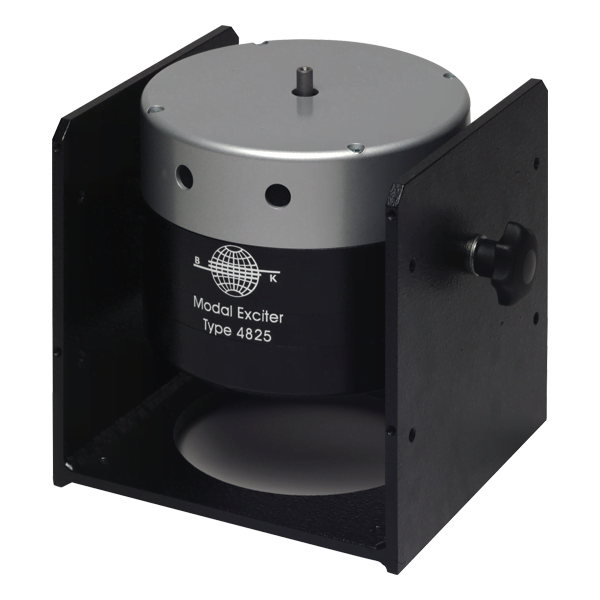Types 4825 and 4826
Modal Exciter
With force ratings up to 200 N (45 lbf) for Type 4825 and 400 N (90 lbf) for Type 4826, these exciters are ideal where payloads require high-precision excitation in single- or multi-point setups. Strong and versatile, they are used for a variety of applications, such as testing of engines, body-in-white on passenger cars and small trucks, and aerospace structures.
Richiedi un preventivoAs light and compact as Type 4824, these modal exciters are much more powerful. They combine a wide frequency range (DC – 5000 Hz) and up to 25.4 mm (1 in) of displacement for improved performance at low frequencies. Suitable for impulse, sine and random signals, Types 4825 and 4826 can be used in SISO and SIMO tests of engines and other small mechanical components, as well as in MISO and MIMO tests of large devices.
USE SCENARIOS
- General mechanical mobility measurements
- Experimental modal analysis, including long-duration testing of mechanical structures
- Single- and multiple-point excitation and response modal analysis applications, including SISO, MISO, SIMO and MIMO test configurations
- Advanced structural dynamics investigations
- Structural damage detection
- Finite element model (FEM) or finite element analysis (FEA) correlation
CHARACTERISTICS
Designed with the same rare-earth neodymium magnet technology as our other modal exciters, when forced-air cooled, Types 4825 and 4826 are capable of delivering up to 200 and 400 N (45 and 90 lbf) of sine force, respectively.
To minimize force drop-offs at resonant frequencies and improve the quality of force measurements, these modal exciters incorporate low-mass, high-rigidity armatures made of magnesium and suspended on springs. Armature position is accurately controlled with built-in optical sensors.
Both Types 4825 and 4826 have a rectilinear guidance system, comprised of four upper and four lower radial flexures, that keeps the driver coil centred, enhancing stability during operation. In torsion and in the transverse directions, the flexure system affords high stiffness to counteract rotational motion of the device under test (DUT). This feature also allows the exciters to absorb lateral forces without damaging their internal construction.
Stingers, or quills, are used in modal testing to impart forces to the DUT with minimal interference from the exciter. All our modal exciters feature a through-hole design that simplifies setup when operating with stingers. Tension- or piano-wire stingers are effortlessly installed using collet chucks; push-pull rods are attached with M6 to 10–32 UNF threaded inserts.
Lightweight construction and a small footprint also maximize the testing capabilities of these exciters because they can be positioned in relation to the DUT with relative ease. Using an optional exciter stand facilitates lateral setups and mechanically pre-tensions piano-wire stingers. Electrical pre-tensioning, especially useful for vertical and skewed setups as well as for excitation in confined spaces, is achieved with our DC Static Centering Unit Type 1056.
Modal Exciter Types 4825 and 4826 can be supplied as stand-alone units, each with its corresponding trunnion and blower, or as complete systems that also include a matching power amplifier, a set of stingers and all necessary cables.
ADDITIONAL CAPABILITIES
To better suit your specific needs, all of our modal exciters can be outfitted with a number of optional accessories: push-pull, nylon and tension-wire stingers; lateral exciter stands; electrical controls for stinger pre-tensioning; force transducers and impedance heads; as well as turnbuckles, collet chuck attachments, adaptors and cable extension kits.



